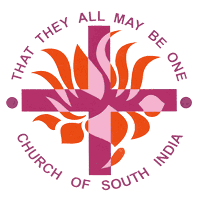OUR VISION

The Church of South India is the result of the union of churches of varying traditions–Anglican, Methodist, Congregational, Presbyterian, and Reformed–in that area. It was inaugurated in September 1947, after protracted negotiation among the churches concerned. Organized into 16 dioceses,each under the spiritual supervision of a bishop, the church as a whole is governed by a synod, which elects a moderator (presiding bishop) every 2 years. Episcopal is thus combined with a synod type government, and the church explicitly recognizes that Episcopal, Presbyterian, and congregational elements are all necessary for the church’s life. The Scriptures are the ultimate standard of faith and practice. The historic creeds are accepted as interpreting the biblical faith, and the sacraments of baptism and the Lord’s Supper are recognized as of binding obligation.
The Church of South India has 4 million members and 14,000 congregations in 21 dioceses (including, for historical reasons, one diocese in northern Sri Lanka). The CSI runs 2000 colleges, 130 schools and 104 hospitals. In the 1960s the Church became conscious of its social responsibility and started organizing rural development projects. There are 50 such projects all over India, 50 training centers for young people, and 500 residential hostels for a total of 35,000 children.
The Motto and The Cross

Church is a complex of personal relationships. Life in the church is life together. It speaks of the qualities that people should possess, their attitude to one another. The symbols, the lotus and the cross, used in the logo of the church possess a rich cultural heritage which will help us understanding of our call and mission.
Lotus, a typical Indian flower, is a temple flower. Myth logically it is supposed to be the seat of the creator. Pankajam one of the Indian names of lotus has a very significant meaning, it mean ‘that born in mud’. This flower blossom at the sunrise and withers away after sunset, in other words it lives as long as it receives the sunrays, hence it is also called ‘THAMMIPUVE’ the flower of the sun. All these meaning attributed to the flower suit us well to interpret the position, nature and role of the people in the bond of union.
The petals of the lotus and the cross are beautifully knitted together with the fiery-tongues of the Holy Spirit. It is an authentic Indian expression of people’s communion with God. The original colors, red (for life) and purple (for piety and ecclesiastical) in white backdrop implicitly communicate the nature of the mystical union, where, an inseparable companionship is established which, again, a typical India thought form.
Premarital Counseling
| M | T | W | T | F | S | S |
|---|---|---|---|---|---|---|
| 1 | 2 | 3 | 4 | 5 | 6 | 7 |
| 8 | 9 | 10 | 11 | 12 | 13 | 14 |
| 15 | 16 | 17 | 18 | 19 | 20 | 21 |
| 22 | 23 | 24 | 25 | 26 | 27 | 28 |
| 29 | 30 | |||||
LiveTV
CHURCH COMMITTEE
Committee and Council Members


